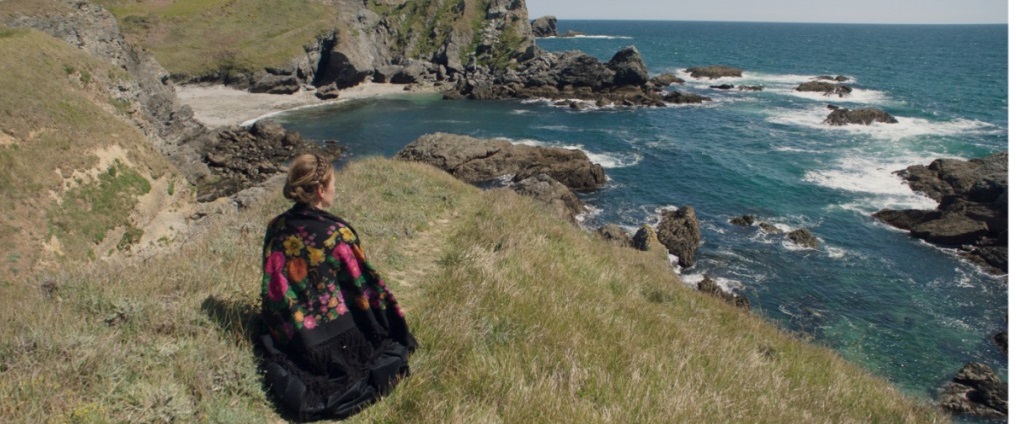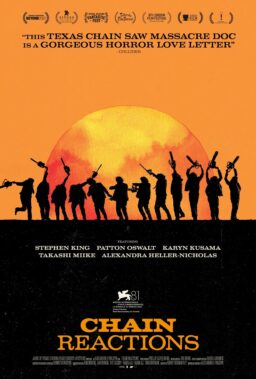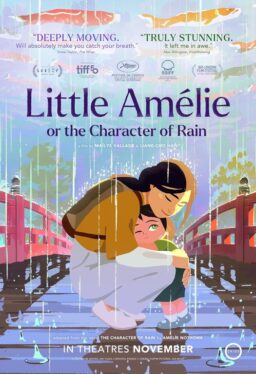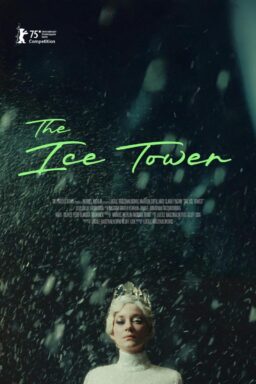Once more I am delighted and honored to be attending the Venice Film Festival, to participate in a panel discussing the always innovative (in a sense by definition) films backed by the Biennale College, which I’ll be writing about in my final installment. My viewing schedule is a little shorter than it’s been in previous years; I teach a college course, and this semester’s schedule kicked off prior to Labor Day, and it just did not feel morally sound to foist a Zoom class on my students to get a few extra days here.
Hence, after a rough jump over the pond (more chop on the flight than I normally like—my “like” percentage is none, but it was bad even by seasoned flyer standards I’d reckon), I got here on Friday and was able to see a single film, the new picture by venerable documentarian Frederick Wiseman, who was in attendance for the premiere of “A Couple.” He’s 92, so I have no grounds for complaint about my trip, I reckon.
The weather here is gorgeous, by the way, warm and with a humidity level that doesn’t quite tilt into the uncomfortable. It’s pleasant enough that I’m writing this from the patio of my hotel on the Lido, despite the fact that the mosquitoes are voluminous and ravenous and brazen and are eating me alive when I’m not swatting them (one of them just landed on one of my knuckles—who DOES that?).
This gorgeous and stirring picture is a late-career curveball from Wiseman. First off, it’s only an hour and change in length—Wiseman’s immersive documentaries, examinations of power hierarchies in a variety of different life settings, sometimes hit the 200-minute mark. Second, it’s not a documentary, in spite of all the spoken words in it originating from real people. Third, title notwithstanding, only one person appears on screen.
Wiseman wrote the film (which is in French) with the protean French actress Nathalie Boutefeu, who here plays Sophia Tolstoy, the wife of the Russian writer Leo Tolstoy. The film’s monologue, such as it is, was drawn from her diary and her letters, and from Leo’s letters to her.
Dressed in a simple outfit suggestive of the turn of the 19th century to the 20th, complete with a shawl that has a floral design that corresponds to the gardens she sometimes walks through, Boutefeu’s Sophia speaks to her husband with tenderness and longing at first. She sometimes speaks directly to the camera, sometimes to the sea, or the distance. Her tenderness turns to indignation, then anger. A woman of no inconsiderable talent for writing, she is dropped into the position of The Great Man’s Wife (in fact she was Leo’s copyist for War and Peace; consider the potential for irritation there) and calls him out not just on that account but on account of him showing more consideration for his serfs than for her. “The poet burns and consumes others,” she says, and she’s not wrong. And eventually she comes back around to tenderness and longing. The film is a remarkably concentrated work. Elegant, graceful, purposefully bristling.

Today has been a three-screening day so far and it’s a great feeling when the films are good. They were. I was honestly dreading Luca Guadagnino’s “Bones and All.” I hated his remake of “Suspiria” with an unquiet passion when I saw it here in 2018. The prospect, then, of him adapting a YA novel with a cannibalism theme did not appeal. I was pleasantly surprised. The movie’s beautifully constructed, and I liked it better than any Guadagnino I’ve seen since “A Bigger Splash.” Prior to seeing the picture, I was in a bit of a huff over the idea of cannibalism as some kind of metaphor—I don’t know why, as I accept such ideas from actual horror films. And as it happens, here it’s handled rather well. The movie’s “eaters” are in fact compelled, almost uncontrollably, to do what they do. The condition is inherited—genetically, and specifically within families. It’s the Philip Larkin poem people quote too much nowadays, in other words. The movie also has a hint of George Romero’s “Martin.”
As the two still-growing, still-uncertain eaters, Taylor Russell and Timothée Chalamet play affecting star-crossed lovers in a grand tradition that harks back to “They Live by Night” and “Badlands.” And thanks to some grisly simulations and highly creepy turns from Mark Rylance, Michael Stuhlbarg, David Gordon Green, and Chloe Sevigny, the movie does work as an actual and proper horror film. Recommended.

Writing about Paul Schrader’s “The Card Counter” last year, I noted that Paul Schrader referred to it as one of his “man at a table” pictures. And in his late career, boy is he leaning hard into that; the very first shot of “Master Gardener,” his new film, is of lead actor Joel Edgerton sitting at a table and what’s he doing? Writing in a journal, of course.
His character, Narval, works at a high-end botanical garden in an unnamed town (the movie was shot in New Orleans and New York, and the gorgeous flowers seen suggest upstate while the hanging oak trees suggest Louisiana). It’s the private estate of Sigourney Weaver’s Miss Haverhill, with whom the taciturn but always candid Narval has a special relationship. One afternoon after discussing an upcoming charity gala, Miss Haverhill, with great hauteur, announces that he is to professionally look after a niece of hers, a young woman named Maya (Quintessa Swindell). Maya’s having a rough time because of, Haverhill declares with a smirk, “lifestyle issues.”
Maya is also beautiful and smart and biracial—this is entirely relevant to what ensues—and takes to gardening well and happily while still contending with an abusive drug-dealer boyfriend. Narval grows fond of her. We hear how things are going through his voluminous journal entries, which, like his flash-frame flashbacks to an earlier part of his life, have unnerving qualities. He speaks of a certain sensation as being like “the buzz you get just before pulling the trigger.” A viewer may notice that Narval wears long-sleeved shirts all the time, even as the weather gets warmer. It’s curious. Then, late one evening in the isolation of his private residence on the estate, he strips to the waist in front of the mirror. At this point I wrote in my notebook, “What the f—k is going on?”
I’m going to leave it at that. (The mileage other critics will give you will definitely vary.) Suffice it to say that Schrader remains astute and unflinching in his pursuit of genuinely purposeful provocation. Is it a spoiler to reveal that there’s a certain shift to optimism here, going beyond the premise that people ARE capable of constructive change? And yes, I did notice the cis-het-male wish fulfillment at work here, and what am I supposed to do about it? Let Schrader be Schrader is my personal view. He’s a great artist. He’s earned his prerogatives, and this work is up to the high standard he’s been setting for himself over the past decade and more.
My third film was Jacques Tourneur’s ever-magnificent “Canyon Passage,” and I’ll get into more detail on that later, after I’ve seen all the films from the Classics program that I’m able to see. I am very glad it’s back—Covid restrictions axed it last year, and it was sorely missed.












